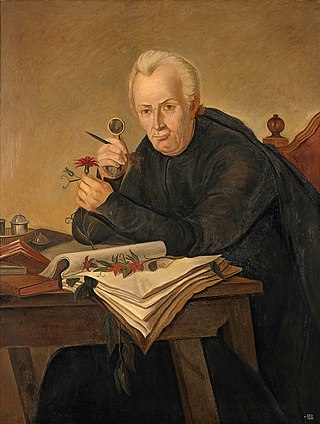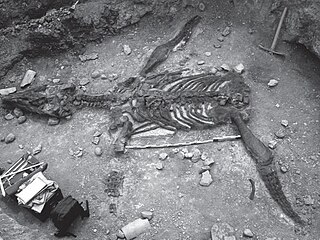Related Research Articles

Fernando Vallejo Rendón is a Colombian-born novelist, filmmaker and essayist. He obtained Mexican nationality in 2007.

The National University of Colombia is a national public research university in Colombia, with general campuses in Bogotá, Medellín, Manizales and Palmira, and satellite campuses in Leticia, San Andrés, Arauca, Tumaco, and La Paz, Cesar. Established in 1867 by an act of the Congress of Colombia, it is one of the largest universities in the country, with more than 53,000 students. The university grants academic degrees and offers 450 academic programmes, including 95 undergraduate degrees, 83 academic specializations, 40 medical specialties, 167 master's degrees, and 65 doctorates. Approximately 44,000 students are enrolled for an undergraduate degree and 8,000 for a postgraduate degree. It is also one of the few universities that employs postdoctorate fellows in the country.

The Pontificia Universidad Javeriana is a private university in Colombia founded in 1623. It is one of the oldest and most traditional Colombian universities, directed by the Society of Jesus, with its main facilities in Bogotá and a second campus in Cali. "La Javeriana", as it is known by its students, has traditionally educated the Colombian upper class. It is one of the 33 universities entrusted to the Society of Jesus in Latin America and one of 167 around the world.

José Celestino Bruno Mutis y Bosio was a Spanish priest, botanist and mathematician. He was a significant figure in the Spanish American Enlightenment, whom Alexander von Humboldt met with on his expedition to Spanish America. He is one of the most important authors of the Spanish Universalist School of the 18th century, together with Juan Andrés or Antonio Eximeno.

Suesca is a town and municipality in the Almeidas Province, part of the department of Cundinamarca, Colombia. It is located on the Altiplano Cundiboyacense, 59 kilometres (37 mi) north of the capital Bogotá. Suesca forms the northern edge of the Bogotá savanna and is a scenic countryside town which is well known because its landscape attracts devotees of rock climbing, trekking, and rafting. It is surrounded by dairy farms and flower plantations. The municipality borders Cucunubá and Lenguazaque in the north, Sesquilé and Gachancipá in the south, Chocontá in the east and Nemocón in the west.

Colombian literature, as an expression of the culture of Colombia, is heterogeneous due to the coexistence of Spanish, African and Native American heritages in an extremely diverse geography. Five distinct historical and cultural traditions can be identified, with their own socioeconomic history: the Caribbean coast, Greater Antioquia, the Cundinamarca-Boyacá Highlands, Greater Tolima and the Western Valley. Colombia produced one of the richest literatures of Latin America, as much for its abundance as for its variety and innovation during the 19th and 20th centuries. Colombian intellectuals who forged the literature of this period also contributed decisively to the consolidation of Latin American literature.

Julio Rey Pastor was a Spanish mathematician and historian of science.

Marta Traba Taín was an art critic and writer known for her contributions to Latin American art and literature.

Manuel del Socorro Rodríguez was a Cuban journalist. He is considered to be the founder of journalism in Colombia. Five years before his arrival in the Viceroyalty of New Granada, the 1785 Viceroyalty of New Granada earthquake had happened, described in the Aviso del Terremoto and published the day of the earthquake. This sparked the birth of journalism in Colombia, when Del Socorro started to report in 1791.

Bruno D’Amore is an Italian mathematician and author.

Tisquesusa, also spelled Thisquesuza, Thysquesuca or Thisquesusha was the fourth and last independent ruler (psihipqua) of Muyquytá, main settlement of the southern Muisca between 1514 and his death in 1537. The Spanish pronunciation of his name brought about the Colombian capital Bogotá. Tisquesusa was the ruler of the southern Muisca Confederation at the time of the Spanish conquest of the Muisca, when the troops led by Gonzalo Jiménez de Quesada and his brother entered the central Andean highlands.

Stenorhynchosaurus is an extinct genus of pliosaurid plesiosaurs which lived in the Early Cretaceous of South America. The type species and only known is Stenorhynchosaurus munozi.

Liborio Zerda was a Colombian physician and Muisca scholar. Zerda has been important in the natural sciences of the late 19th and early 20th century in Colombia, publishing many articles about various topics, from medicine to chemical analysis, radioactivity and the popular drink chicha.
Eduardo Zalamea Borda (1907–1963) was a Colombian journalist and writer. He was born in Bogota, Colombia. After a suicide attempt in Barranquilla, he went to live in La Guajira for several years. One of the writers he promoted, Gabriel García Márquez, later recalled that Borda "anchored himself at Café Roma, and shot himself in the chest with a revolver, without serious consequences". He came back to Bogota at the age of 21. He joined the newspaper La Tarde as a cub reporter. He went on to become editor at El Liberal and El Espectador newspapers. At the latter, he became known for promoting young writers. Among them was the future Nobel Prize winner García Márquez, whose first story was published in El Espectador in 1947.
María Euridice Páramo Fonseca was a Colombian paleontologist and geologist. She contributed to paleontology in Colombia in the fields of describing various Cretaceous reptiles, most notably the mosasaurs Eonatator and Yaguarasaurus, the ichthyosaur Kyhytysuka, and the plesiosaurs Leivanectes and Stenorhynchosaurus.
Fernando Etayo Serna is a Colombian paleontologist and geologist. His contributions on the paleontology in Colombia has been mainly on the descriptions of ammonites and Etayo has helped describing many fossiliferous geologic formations of Colombia. Etayo obtained his MSc. degree in geology and geophysics from the Universidad Nacional de Colombia in 1963, and his PhD in paleontology from the University of California, Berkeley in 1975.

Federico Ardila is a Colombian mathematician and DJ who researches combinatorics and specializes in matroid theory. Ardila graduated from MIT with a B.Sc. in mathematics in 1998 and obtained a Ph.D. in 2003 under the supervision of Richard P. Stanley in the same institution. Ardila is currently a professor at the San Francisco State University and additionally holds an adjunct position at the University of Los Andes in Colombia.

José Oswaldo Lezama Serrano is a Colombian mathematician who researches abstract algebra and specializes in noncommutative algebra. Lezama graduated from the UIS in 1978 with a B.Sc. in Mathematical Education and obtained a PhD in 1983 under the supervision of Zenon Ivanovich Borevich from the Saint Petersburg State University. Since 1985 Lezama was a full professor at the National University of Colombia; he retired in 2020.

Yu Takeuchi was a Colombian nationalized Japanese physicist and mathematician, teacher and promoter of mathematics in Colombia.

The Colombian Mathematical Society is an organisation founded in 1955 to promote the development of mathematics teaching and research in Colombia, and is the main professional society of Colombian mathematicians. It has two publications, the Colombian Journal of Mathematics and Lecturas Matemáticas, and awards three prizes: the National Mathematics Award, the José Celestino Mutis Prize, and the José Fernando Escobar Prize.
References
- ↑ Zalamea, Fernando (2012). Filosofía sintética de las matemáticas contemporáneas (in Spanish). Bogotá: Universidad Nacional de Colombia. ISBN 9789587197242.
- ↑ Zalamea, Fernando (31 August 2018). Philosophie-synthetique-de-la-mathematique-contemporaine (in French). París: Hermann. ISBN 978-2705695866.
- ↑ "Descripción del autor por la editorial francesa Hermann". 31 August 2018.
- ↑ Zalamea, Fernando (June 2018). Grothendieck: Una guía a la obra matemática y filosófica. Bogotá. Colombia. ISBN 9789584857101.
{{cite book}}: CS1 maint: location missing publisher (link) - ↑ Honorario, A. (2018). Dr. Fernando Zalamea Traba. Revista de la Academia Colombiana de Ciencias Exactas, Físicas y Naturales, 42(165), 442–448. Recuperado a partir de https://raccefyn.co/index.php/raccefyn/article/view/810
- ↑ Ricuperati, Gianluigi (2015). 100 Global Minds: The Most Daring Cross-disciplinary Thinkers in the World. Roads Publishing.